From 1913 to 1941, the Arlington Radio Towers dominated the Arlington skyline, visible for miles in either direction.
Standing at the intersection of Columbia Pike and Courthouse Road, the towers were built by the U.S. Navy Department to house the nation’s first radio station.
Arlington Radio Towers and Alcova Heights neighborhood, date unknown.
Referred to as “Radio Arlington” or “NAA,” the station provided numerous services while it was active, and used multiple transmitters, which operated on both longwave and shortwave frequencies.
The Navy selected Arlington as the site of this historic structure after a survey of numerous potential locations in the Washington, D.C., area. Upon choosing a tract near Fort Myer, 13.4 acres of land was transferred from the War Department to the Navy, and construction began in 1911.
In addition to the towers themselves, two other facilities were built on the site: one to house the transmitters and serve as office space for the superintendent of the Naval Radio Service, and another to house receiving transmitters and quarters for the crew.
The towers came to be known as the “Three Sisters.” The tallest stood at 600 feet tall, with its accompanying “sisters” at 450 feet. This made the 600-foot tower the tallest freestanding radio tower in the world at the time of its construction, as well as the most powerful station (2,643 meters and 113 kHz, respectively). The towers were also the second-largest man-made structure in the world at the time, second to the Eiffel Tower, to which the towers also drew comparisons in their respective designs. In 1923, two 200-foot towers were added to the structure.
The Arlington Radio Towers, ca. 1920.
Designed to facilitate communication between the government and fleet commanders at sea, and as part of a “high-powered chain” of connected radio towers linking Washington, D.C., to the rest of the country, the towers pioneered efforts in advancing wireless communication. In 1915, the president of AT&T made a telephone call from New York City to Mare Island, California, via the Arlington towers – the first transmission of this type. Later that year, the towers made the first Trans-Atlantic voice communication with a call between the Three Sisters and the Eiffel Tower – a distance of more than 3,600 miles. The towers also served as the nation’s timekeeper and weather station, broadcasting daily time signals and weather reports between 1913 and 1936.
The towers initially used a 100-kilowatt Fessenden rotary-spark, which remained in use until July 8, 1923. The Federal Telegraph Company also installed 35-kilowatt Poulsen arc transmitters, which were found to be superior and from then on more widely used. In the 1920s, vacuum tube transmitters mostly replaced the older models both in Arlington and other broadcasting towers installed by the Navy.
Arlington Radio Towers, date unknown. Photo caption reads:
“View of Radio Towers on Court House [sic] Road, from rear of Sommers house, showing how undeveloped the area was.”
In 1917, the towers also played a quiet but important role in the United States’ entry into World War I.
According to the Arlington Historical Society, on the morning of April 6, as Congress decided to enter the U.S. into the war, the Joint Resolution was to be sent to President Woodrow Wilson for signing at 1:00 p.m. that day. Fifteen minutes before the signing was to take place, all stations of the navy system were instructed to cease operations to receive the signal that war was imminent. As the president signed the resolution, a naval commander in the executive office manually signaled an assistant standing in the adjacent State, War, and Navy Building (now the Eisenhower Executive Office Building), who notified the radio station, which transmitted the first declaration of war sent by radio to U.S. warships at sea.
The radio industry was under the control of the federal government during the war, and the Three Sisters towers continued to broadcast time signals, weather reports, and news bulletins throughout wartime. During this period, civilians were banned from possessing and operating radio receivers, but this ban was lifted on April 15, 1919.
The towers were dismantled in 1941, described as a menace to the newly constructed Washington National Airport (which had replaced the Washington-Hoover Airport that same year). The radio transmission carried by the towers was transferred to Annapolis, as were the towers themselves, which were disassembled and reconstructed at the Maryland site.
Transmitting equipment from the Three Sisters also went to Annapolis, while receiving equipment was transferred to a station at Cheltenham. The Navy later brokered a $1 contract for the removal of the remainder of the structure, which was taken for scrap.
Until 1956, the Arlington site served primarily as a link between the different Naval Communication Stations in Washington, D.C. The Navy ordered the disestablishment of NAA on July 1 of that year, followed by various ceremonies championing the legacy of the bygone structures and the station itself. The Annapolis and Cheltenham sites then took on the duties that were, up until then, still being conducted at the Arlington location. Today, the site formerly occupied by the towers is still home to military communications departments, including the Defense Communications Agency.
The Arlington community missed the towers very much, with one writer for the Northern Virginia Sun eulogizing their absence:
“The skyline will seem blank to those accustomed to the sight of the ‘three sisters,’ but, like everything else, the sense of their loss will not last long. Time moves too fast for that.”
To learn more about Arlington's history, visit the Center for Local History on the first floor of the Central Library.
Do you have a question about this story, or a personal experience to share?
Use this form to send a message to the Center for Local History.
Center For Local History - Blog Post Message Form
Do you have a question about this story, or a personal experience to share? Use this form to send a message to the Center for Local History.
"*" indicates required fields

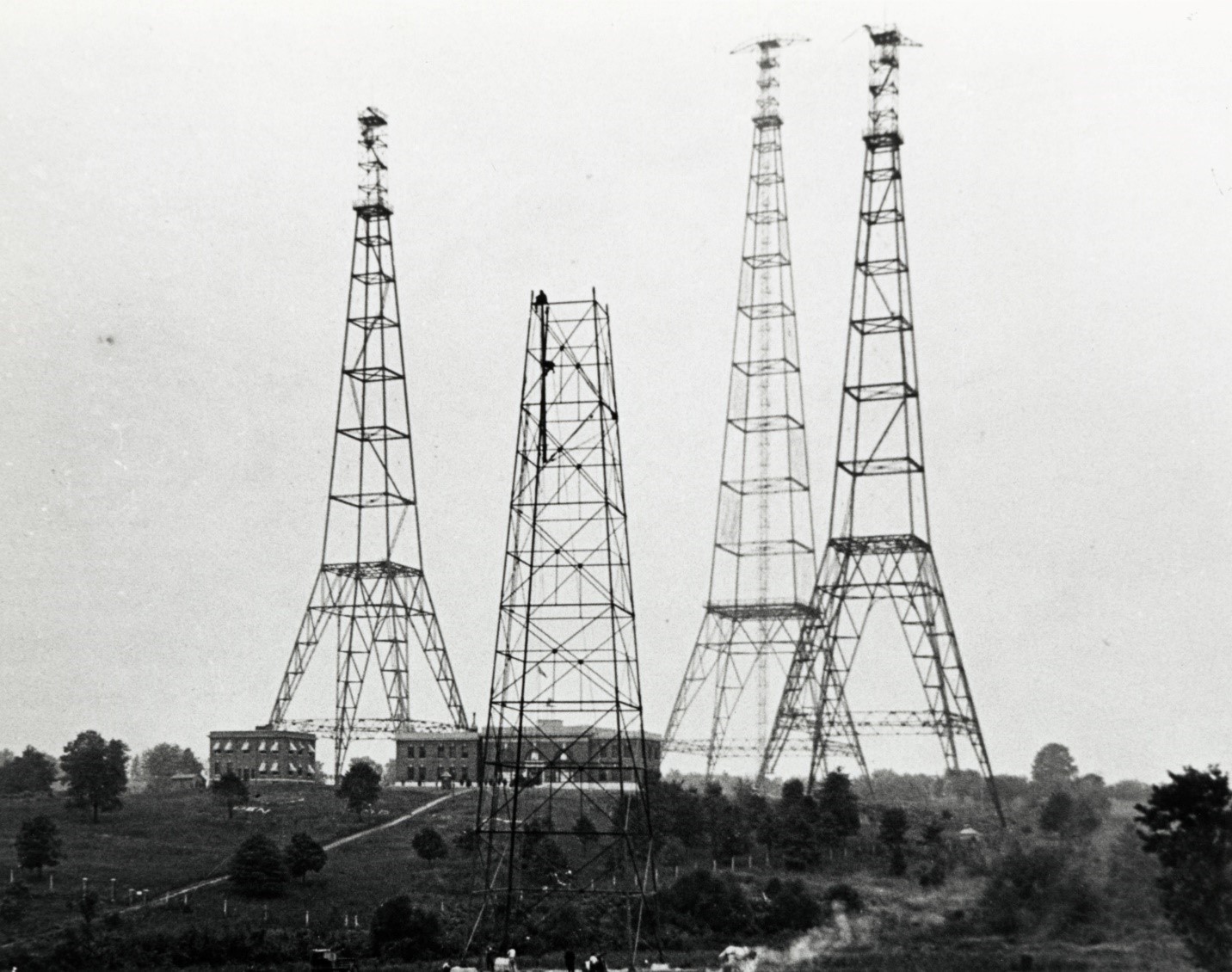
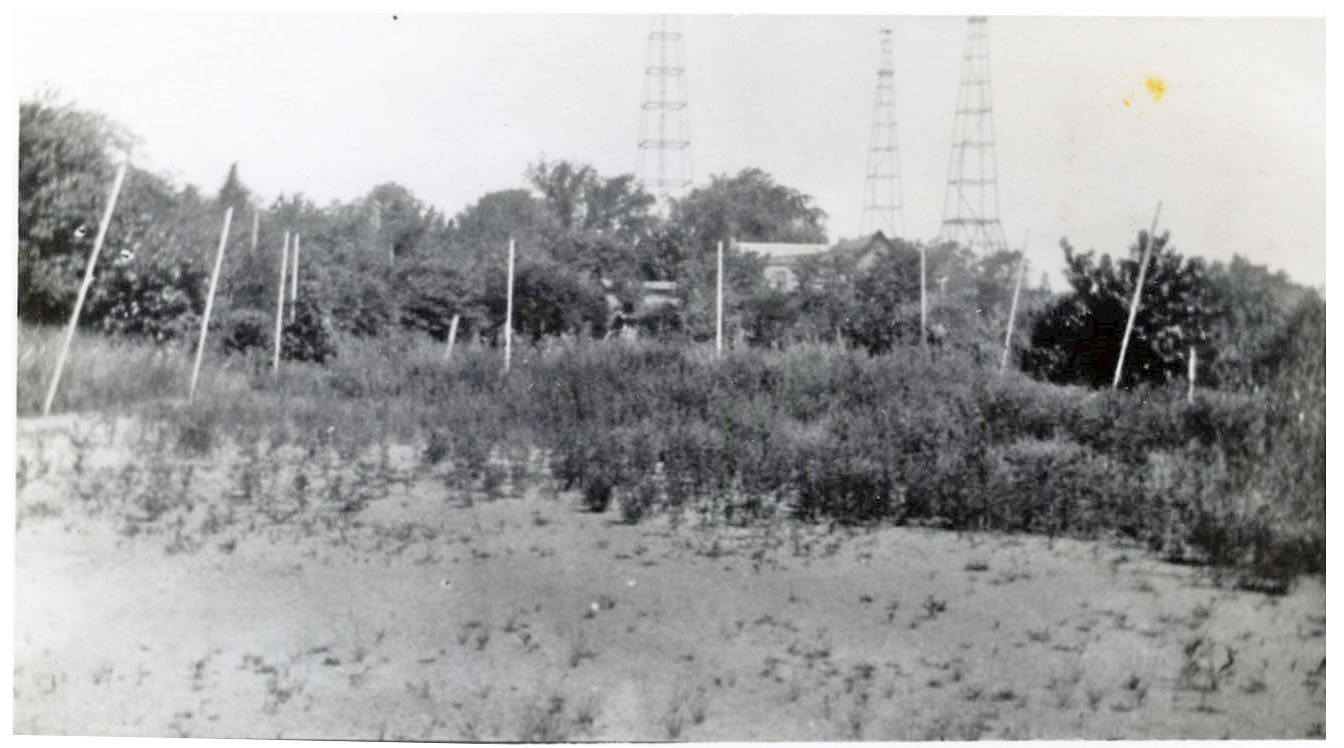
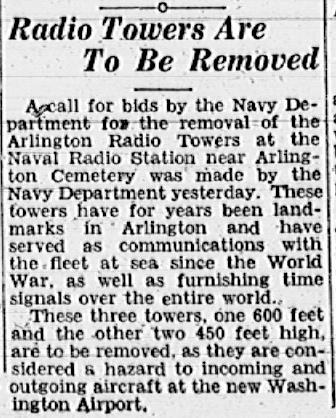
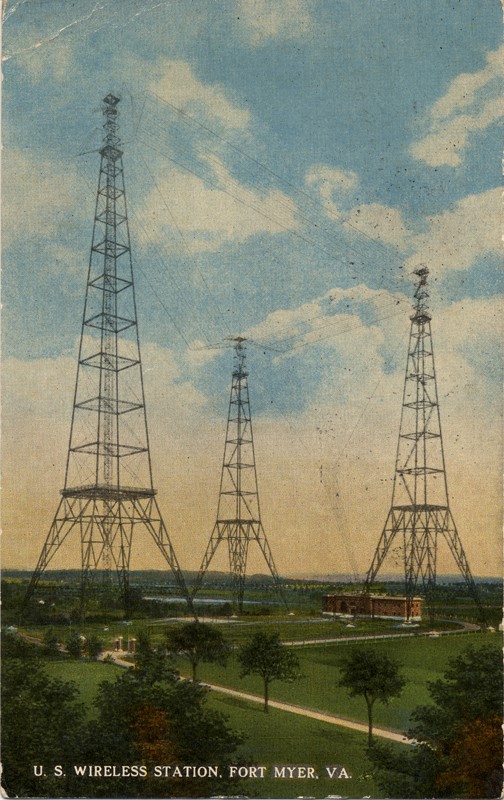
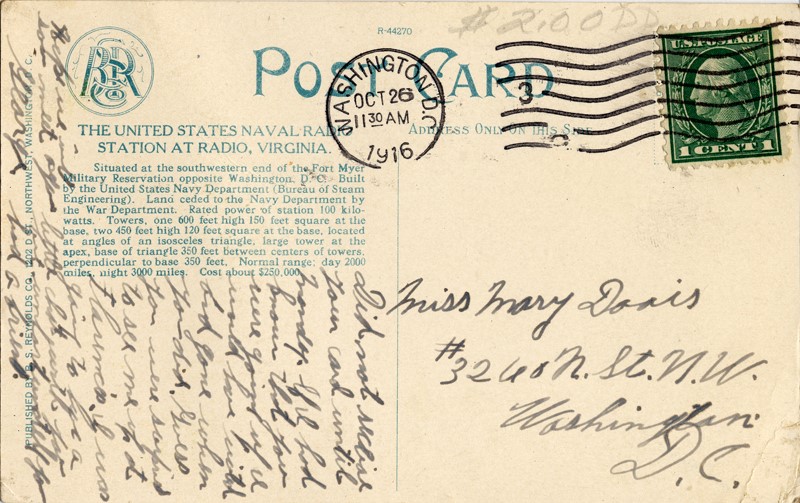
Great stuff! Please keep it up!
I knew about the towers, but the inclusion of the post card really brought home just how colossal they were. I also did not know that the towers that stood near the Naval Academy were originally those near Fort Myer. One small suggestion: the author made some mistakes in the technical references. You might want to get this sort of tech stuff vetted by someone with a radio background. Aside from that, very well done. I really enjoyed the article.